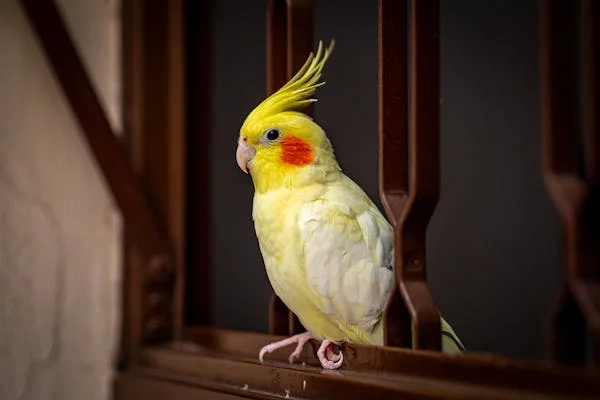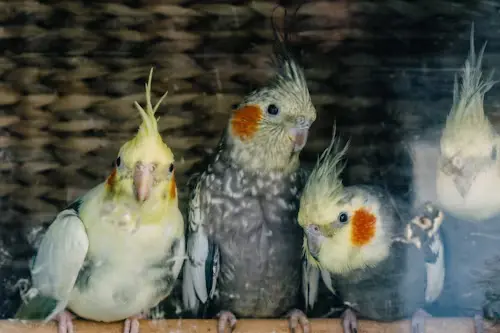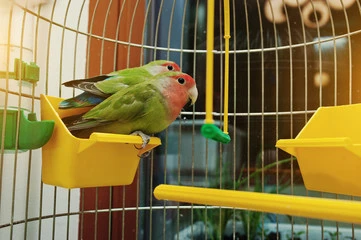The Complete Green Parrot Handbook: Everything You Need to Know About These Magnificent Birds
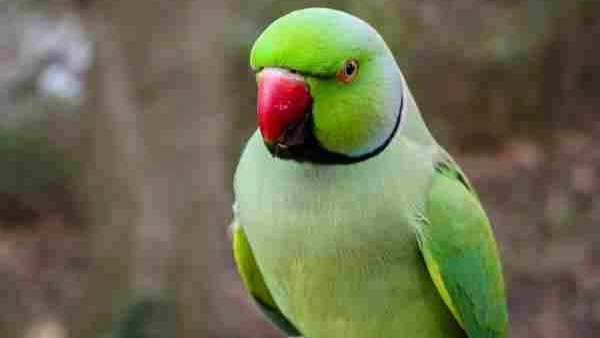
Are you captivated by the vibrant plumage and lively personalities of green parrots? Whether you’re a seasoned bird enthusiast or considering bringing a feathered companion into your home, understanding the diverse world of green parrots is essential. From their distinctive characteristics to their unique behaviors and sounds, these intelligent creatures have fascinated humans for centuries.
Table of Contents
In this comprehensive guide, we’ll explore everything you need to know about identifying various green Parakeet species, their unique traits, and essential care information to ensure these beautiful birds thrive in both wild and captive environments.
Overview of Green Parrot Species
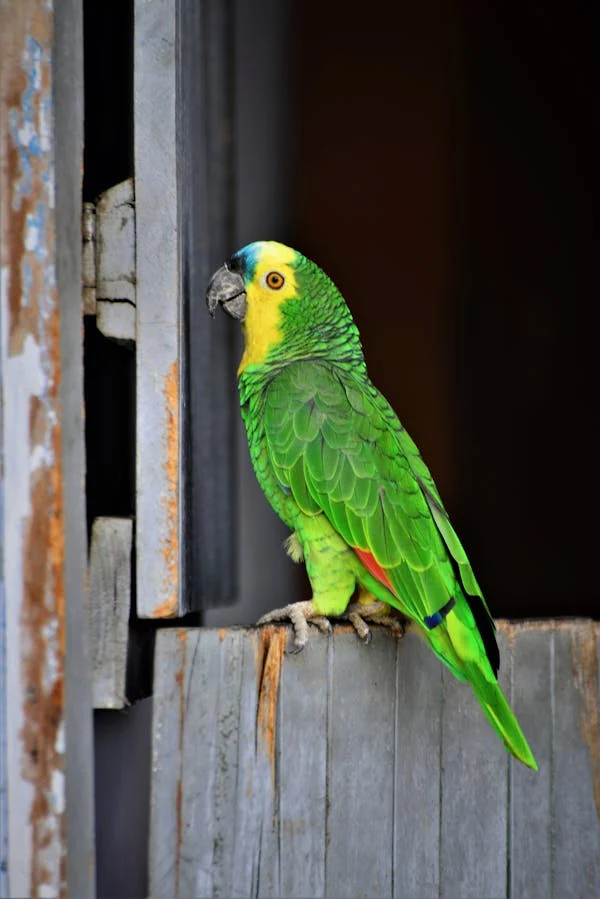
Green Parakeets encompass a diverse range of species across multiple continents, with each bringing its own distinct personality, physical characteristics, and care requirements. The vibrant green plumage that unites these birds serves various adaptive purposes in their natural habitats, primarily providing camouflage among the lush foliage of tropical and subtropical forests.
Key Distinguishing Features of Green Parrots:
| Feature | Variations |
|---|---|
| Size | From small parakeets (7-8 inches) to large macaws (up to 40 inches) |
| Green Coloration | Ranges from yellow-green to deep forest green, with various markings |
| Beak Shape | Strong, curved beaks adapted for different diets |
| Geographic Origin | Native to regions across South America, Central America, Africa, and Australasia |
| Lifespan | 15-80 years depending on species |
Understanding these characteristics will help you not only identify different green Parakeet species but also provide appropriate care tailored to their specific needs.
Detailed Green Parrot Species Profiles
Green Parakeet (Monk Parakeet)
The Green Parakeet, also known as the Monk Parakeet or Quaker Parrot, stands out among green parrot species for its remarkable adaptability and social intelligence. Originally native to South America, these birds have established thriving colonies in urban environments across North America and Europe.
Green Parakeet Characteristics:
- Size: 11-12 inches long
- Weight: 90-120 grams
- Coloration: Primarily bright green with gray chest and forehead
- Lifespan: 20-30 years in captivity
- Temperament: Highly social, intelligent, and vocal
“Green parakeets are among the most adaptable parrot species, successfully establishing feral populations in environments far from their native range.” – Dr. James Wright, Avian Ecologist
What makes Green Parakeets particularly interesting is their unusual nesting behavior. Unlike other parrots that nest in tree cavities, Green Parakeets build elaborate stick nests that can house multiple pairs, creating parrot “apartment buildings” that can weigh hundreds of pounds. These communal nests serve as year-round homes and contribute to their successful adaptation to urban environments.
Green Parakeet Behavior in Urban Settings:
- Construct large communal nests on utility poles and tall structures
- Form tight-knit flocks that cooperate in nest building and defense
- Demonstrate impressive problem-solving abilities
- Exhibit complex social structures and communication
If you’re learning how to stop green parakeet from biting, understanding their natural behavior is crucial. In the wild, nipping serves as communication, and captive parakeets need proper socialization and training to redirect this instinct.
Green Amazon Parrot
The Green Amazon Parrot represents a group of medium-to-large parrots native to the Americas, with the Double Yellow-headed Amazon and the Blue-fronted Amazon being popular examples. These birds are renowned for their exceptional talking ability and charismatic personalities.
Green Amazon Parrot Characteristics:
- Size: 13-16 inches
- Weight: 400-600 grams
- Coloration: Primarily green with varying amounts of yellow, blue, or red on the head and wings
- Lifespan: 40-70 years in captivity
- Temperament: Intelligent, affectionate, can become territorial
Amazon parrots are known for their impressive vocal abilities and strong personalities. They can learn extensive vocabularies and even understand the context of certain phrases. Their intelligence requires consistent mental stimulation to prevent behavioral issues.
Green Parrot Sounds from Amazon Species:
- Clear speech mimicry with proper context
- Melodic whistling and singing
- Loud contact calls, particularly at dawn and dusk
- Purring sounds when content
- Distinct alarm calls when startled
Military Macaw: The Majestic Green Giant
Though not entirely green, the Military Macaw deserves mention as one of the larger predominantly green parrot species. These magnificent birds display an olive-green body with bright blue flight feathers and a striking red patch on the forehead.
Military Macaw Characteristics:
- Size: 27-33 inches (including tail)
- Weight: 900-1100 grams
- Coloration: Olive green body with blue wing tips and red forehead
- Lifespan: 50-60 years in captivity
- Temperament: Intelligent, social, requires extensive interaction
These majestic birds require spacious accommodations and regular flight opportunities to maintain physical and mental health. They form strong bonds with their human companions but demand significant time commitment.
Lesser-Known Green Parrot Species
While the species above are commonly known, several lesser-known green Parakeets deserve attention for their unique characteristics and conservation needs:
Hispaniolan Amazon (Amazona ventralis)
- Endemic to Hispaniola (Dominican Republic and Haiti)
- Distinctive red wing patch and white forehead
- Vulnerable conservation status due to habitat loss
Red-crowned Parrot (Amazona viridigenalis)
- Native to northeastern Mexico
- Bright green with distinctive red crown and bright blue flight feathers
- Endangered in the wild but has established feral populations in California and Texas
Green-cheeked Conure
- Smaller parrot with green body and multi-colored accents
- Playful personality makes them popular as pets
- Known for being quieter than many other parrot species
For those seeking green parrot breeders, researching those specializing in lesser-known species can help support conservation efforts while finding a unique companion. Always verify breeders are ethical and properly licensed.
Green Parrot Look-Alikes: Avoiding Misidentification
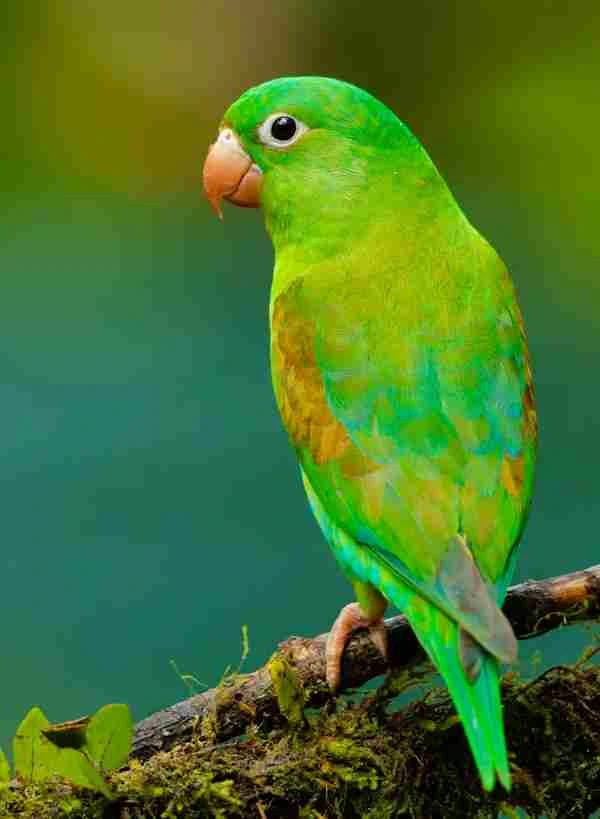
Many birds display green plumage that can cause confusion for novice bird enthusiasts. The following comparison table will help you distinguish true green parrots from similar-looking species:
| Species | Distinguishing Features | True Parrot? |
|---|---|---|
| Green Parakeet | Gray chest, hooked beak, squared tail | Yes |
| Budgerigar (green color mutation) | Much smaller (7-8 inches), scalloped wing pattern | Yes |
| Green Finch | Smaller size, conical beak, no curved hook | No |
| Green Bee-eater | Slender body, long curved beak, distinctive flight pattern | No |
| Green Magpie | Longer tail, crow-like beak structure | No |
Understanding these distinctions helps in accurate identification and ensures appropriate care recommendations if you’re considering a green Parakeet as a pet.
How to Identify a Green Parrot: A Step-by-Step Approach
When attempting to identify a specific green parrot species, follow this systematic approach:
- Assess Size and Shape
- Note overall length from beak to tail tip
- Observe body proportions and tail length
- Compare to familiar objects for scale reference
- Examine Color Patterns
- Note the specific shade of green (yellow-green, blue-green, olive)
- Identify any color patches on wings, head, or tail
- Look for distinctive markings like eye rings or cheek patches
- Observe the Beak
- Note size, shape, and color
- Large, powerful beaks indicate macaws or Amazon parrots
- Smaller, more delicate beaks suggest conures or parakeets
- Listen to Vocalizations
- Green Parakeet sounds vary significantly between species
- Some have distinctive calls that aid identification
- Note pitch, volume, and pattern of sounds
- Consider Geographic Location
- Native range can narrow down possibilities
- In urban settings, consider common feral populations
- Pet escapees may complicate identification
“The most reliable parrot identification combines physical characteristics with behavioral observations. Notice how the bird moves, socializes, and communicates.” – Dr. Elizabeth Morgan, Ornithologist
Green Parrot Behavior
Understanding Your Feathered Friend
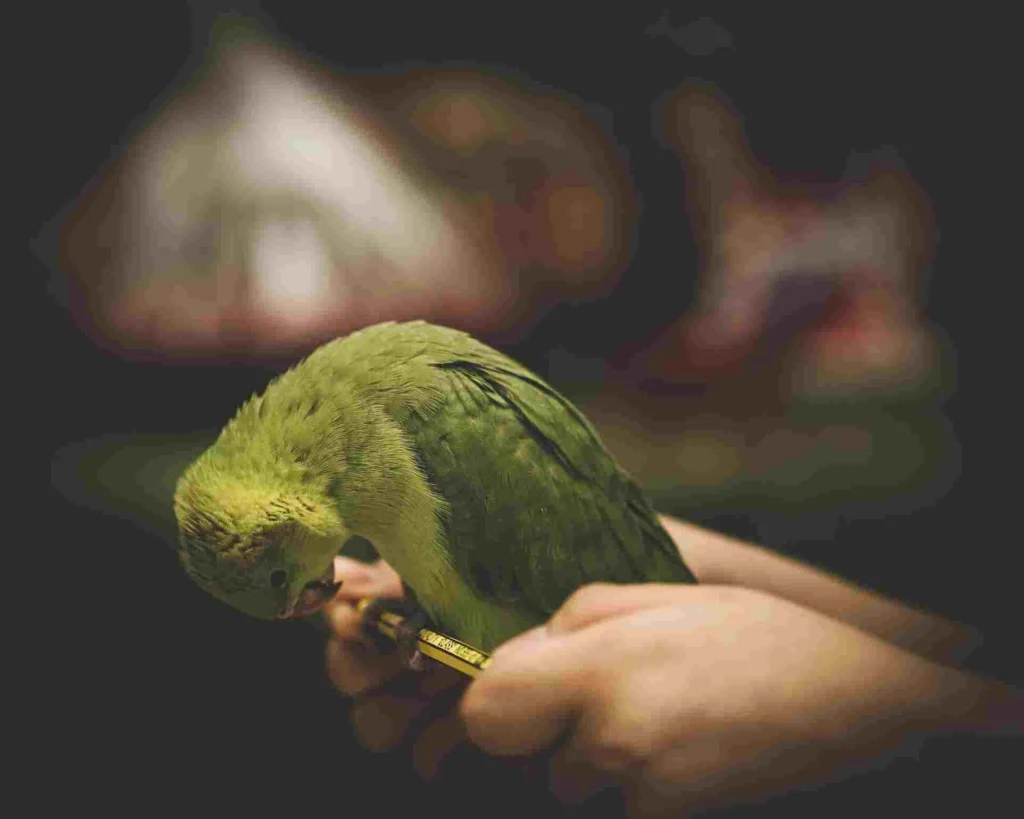
Green Parakeet behavior varies between species, but certain traits are common across this diverse group. Understanding these behaviors is essential for proper identification and care:
Common Green Parrot Behaviors:
- Sociability: Most green Parakeets are highly social, forming strong bonds with flock members or human companions.
- Vocalization: Different vocalizations serve specific purposes, from contact calls to territorial declarations.
- Foraging: Natural behaviors include searching for food, manipulating objects, and using their beaks as tools.
- Grooming: Regular preening maintains feather condition and strengthens social bonds.
- Play: Playful activities provide mental stimulation and physical exercise.
For pet owners struggling with how to stop green parakeet from biting, recognizing stress signals is crucial. Flattened feathers, dilated pupils, and rapid breathing often precede biting behaviors. Establishing trust through consistent, positive interactions helps minimize aggressive responses.
Conservation Status of Green Parrots
Many green parrot species face significant conservation challenges in their native habitats. Understanding these threats is essential for both conservation efforts and ethical pet ownership:
Primary Threats:
- Habitat destruction through deforestation
- Illegal wildlife trafficking for the pet trade
- Climate change affecting food availability
- Introduction of non-native predators
- Urban development encroaching on natural territories
Several organizations work specifically on green Parakeet conservation, including the World Parrot Trust and the Parrot Conservation Alliance. Supporting these organizations helps protect wild populations while enjoying the companionship of ethically sourced pet parrots.
Choosing the Right Green Parrot as a Pet
If you’re considering bringing a green parrot into your home, careful selection is essential for a successful relationship. Consider these factors when making your decision:
- Lifestyle Compatibility: Some species require more attention than others
- Space Requirements: Larger species need more room for movement and flight
- Noise Tolerance: Some green Parakeets are naturally louder than others
- Longevity: Many parrots live for decades, requiring long-term commitment
- Experience Level: Some species are better suited for first-time bird owners
For beginners, Green Parakeets (Monk Parakeets) and Green-cheeked Conures often make excellent companions due to their manageable size and adaptable personalities. More experienced owners might consider Green Amazon Parrots, which require more specialized care but offer incredibly rewarding relationships.
Conclusion: Appreciating Green Parrot Diversity
The world of green parrots encompasses remarkable diversity, from tiny parakeets to magnificent macaws. Each species brings unique green Parakeet characteristics, behaviors, and care requirements. Whether you’re an avid birdwatcher, a conservation advocate, or a prospective pet owner, understanding these intelligent creatures enhances appreciation for their remarkable adaptations and personalities.
For those interested in learning more about specific aspects of green parrot care, behavior, or conservation, our upcoming articles will delve deeper into these fascinating topics. From detailed care guides to conservation updates, we’re committed to providing comprehensive information about these extraordinary birds.
Have you encountered a green parrot species not covered in this guide? Share your experiences in the comments below! Our community of bird enthusiasts loves learning about new species and unique observations.



